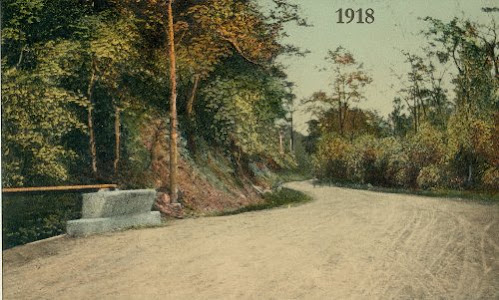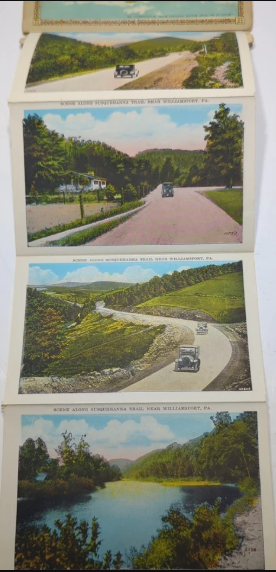"Delegations From Tioga and Bradford Counties Clash at Williamsport Meeting Williamsport, Pa., Feb. 3.-Delegations from Tioga and Bradford counties advocating different routes for the northern lap of the proposed Susquehanna trail clashed at a meeting attended by 500 good-road enthusiasts, representing every county in northerner, central Pennsylvania. The large court room was filled during the entire afternoon as the rival delegations presented their claims and fought for what they termed justice in road matters. The Tiogans are asking that trail, which is a proposed improved highway connecting Harrisburg and Elmira, N. Y., follow the old road from Trout Run through Liberty, Blossburg and Mansfield.
This highway was laid out in 1796 to connect central Pennsylvania with central New York state and was used as a post road. Bradford county contends the better route is up Lycoming creek over a road ordered built by the legislature 100 years ago."
At a meeting of the board of governors of the . Susquehanna Trail Association, formed to secure an improved highway from Harrisburg to the New York State line, it was decided to establish permanent headquarters in Williamsport.
The following legislative committee was appointed:
Senator Charles W. Sones, Williamsport;
Charles E. Dewey, Bradford;
W. C. Murdock, Milton:
Frank Marvin, Tioga;
Henry T. Albeen, Potter county;
Harry Knight, Sunbury;
Representative Sampsel, Snyder county;
B.C. North, Selinsgrove.
An emblem in the form of a circle with Indian head in the center and "Susquehanna Trail" emblazoned under the head was adopted..
SIGN PETITIONS FOR GOOD ROADS
D. A. R. Chapters Along River Ask For Establishment of "The Susquehanna Trail"
Bradford Chapter, Daughters of the American Revolution is asking the chapters along the Susquehanna river Harrisburg, northward, to co| operate with them in their work for the establishing of "The Susquehanna Trail and Good Roads." The road will start from this city and continue 146.6 miles to the northern boundary of Pennsylvania, making a direct water grade route from Harrisburg to Elmira, N. Y., by way of Selinsgrove, Sunbury, Lewisburg, Milton, Williamsport, Canton and Troy.
The road will follow the trail that Col. Hartley and his troops took in the fall of 1778 on their famous expedition of relief to the settlers between the west and north branches of the Susquehanna. A State highway would make an appropriate marker of this route of such great historical interest. Col. Hartley destroyed all the Indian towns along the way and had a battle with the Indians at Cedar Ridge, killing a famous chieftain.
Petitions have been sent Harrisburg Chapter member D. A. R. to sign and every is asked to use her influence among the Legislators to support the "Susquehanna Trail."
Letter from Armstrong in McEwensville, giving an extensive history of the area along the route.
- Charles Williamson, Land Agent for the Pulteney Estate in N. Y., arrived in America from England, November 1791.
- Charles Williamson petitioned the Pennsylvania Assembly to build a road through the wilderness to Northern Penn.
- February 1792, Williamson blazed the Indian Trail to the Genessee River in N. Y,
- April 10, 1792, the Assembly passed an Act; for the purpose of viewing and laying out a road from the Loyalsock Creek near Williamsport to the Rioga River and to 109 mile stone, state line, Lawrenceville.
- June 1792, Williamson hired Robert and Benjamin Patterson with a company of woodsmen to build the road.
- Later that summer 200 German men, women and children arrived. They were sent on to help on the road.
- A blockhouse was built at the site of Liberty for supplies.
- The road cut over Bloss Mountain and down to Peter’s Camp on the Tioga River, Blossburg.
- They moved north along the Tioga River, fall of 1792.
- The road builders reached the area about 2 miles south of Mansfield and cleared a 2 acre site for camp.
- Facing starvation as supplies ran out, they were rescued by Canoes from Painted Post. The women and children and sick were taken to Painted Post, the men took the land route, thus the name Canoe Camp.
- The road builders returned in the spring to finish the road to Bath, N. Y,






.jpeg)








.jpeg)

.png)
.png)






























No comments:
Post a Comment
I'll read the comments and approve them to post as soon as I can! Thanks for stopping by!